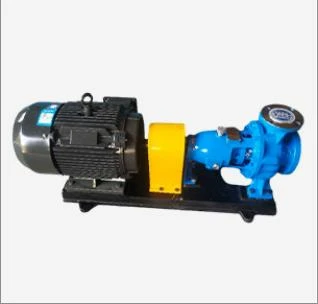English
- Afrikaans
- Albanian
- Amharic
- Arabic
- Armenian
- Azerbaijani
- Basque
- Belarusian
- Bengali
- Bosnian
- Bulgarian
- Catalan
- Cebuano
- Corsican
- Croatian
- Czech
- Danish
- Dutch
- English
- Esperanto
- Estonian
- Finnish
- French
- Frisian
- Galician
- Georgian
- German
- Greek
- Gujarati
- Haitian Creole
- hausa
- hawaiian
- Hebrew
- Hindi
- Miao
- Hungarian
- Icelandic
- igbo
- Indonesian
- irish
- Italian
- Japanese
- Javanese
- Kannada
- kazakh
- Khmer
- Rwandese
- Korean
- Kurdish
- Kyrgyz
- Lao
- Latin
- Latvian
- Lithuanian
- Luxembourgish
- Macedonian
- Malgashi
- Malay
- Malayalam
- Maltese
- Maori
- Marathi
- Mongolian
- Myanmar
- Nepali
- Norwegian
- Norwegian
- Occitan
- Pashto
- Persian
- Polish
- Portuguese
- Punjabi
- Romanian
- Russian
- Samoan
- Scottish Gaelic
- Serbian
- Sesotho
- Shona
- Sindhi
- Sinhala
- Slovak
- Slovenian
- Somali
- Spanish
- Sundanese
- Swahili
- Swedish
- Tagalog
- Tajik
- Tamil
- Tatar
- Telugu
- Thai
- Turkish
- Turkmen
- Ukrainian
- Urdu
- Uighur
- Uzbek
- Vietnamese
- Welsh
- Bantu
- Yiddish
- Yoruba
- Zulu
Telephone: +86 13120555503
Email: frank@cypump.com
Nov . 27, 2024 09:10 Back to list
Innovative Approaches to Efficient Slurry Pumping and Handling Systems
Comprehensive Solutions for Slurry Pumping
In various industrial applications, especially in mining, construction, and wastewater management, efficient slurry pumping is critical. Slurries, which are mixtures of liquids and solids, often present unique challenges due to their abrasive and viscous nature. As industries evolve to include more complex processes and materials, the need for comprehensive solutions for slurry pumping becomes increasingly paramount. This article explores the key aspects of slurry pumping solutions, including technology, design considerations, and industry applications.
Understanding Slurries
Before diving into pumping solutions, it is essential to understand what constitutes a slurry. A slurry typically consists of a liquid phase—usually water—and a solid phase, which can range from fine powders to coarse particles. This mixture can be challenging to transport without specialized equipment due to factors such as density, viscosity, and the abrasive qualities of solid particles. Therefore, selecting the right pumping system requires a deep understanding of the specific slurry characteristics.
Pumping Technologies
There are various pumping technologies tailored for handling slurries, each offering distinct advantages depending on the application. Some of the most common types of pumps used for slurry transport include
1. Centrifugal Pumps While traditional centrifugal pumps are efficient for low-viscosity fluids, their effectiveness diminishes when handling slurries with high solid content. Advanced designs, such as semi-open impeller centrifugal pumps, can accommodate moderate slurries better than standard models but may still struggle with highly viscous mixtures.
2. Positive Displacement Pumps These pumps are often preferred for their ability to handle high-viscosity slurries and provide consistent flow rates. Gear pumps, diaphragm pumps, and peristaltic pumps are some examples where positive displacement mechanisms excel. Their design reduces shear stress on the slurry, making them suitable for sensitive applications.
3. Wear-Resistant Materials The abrasive nature of many slurries necessitates the use of wear-resistant materials in pump construction. Pumps made from hardened alloys, rubber linings, or other durable materials significantly increase the service life and reliability of pumping systems.
Design Considerations
Beyond selecting the appropriate technology, design considerations play a crucial role in optimizing slurry pumping systems
. Key factors includecomprehensive solutions for slurry pumping and ...

- Pump Sizing Accurate pump sizing based on the slurry's physical properties—such as density, viscosity, and particle size distribution—is essential for efficient operation. Oversizing can lead to energy inefficiencies, while undersizing can result in inadequate flow rates.
- System Layout The layout of pipes, bends, and fittings in a slurry transport system can affect overall efficiency. Minimizing bends and utilizing smooth transitions can reduce friction losses and enhance the performance of the system.
- Maintenance Access Given the challenges associated with slurry transport, the design should allow easy access for maintenance and repairs. Regular maintenance prevents downtime and prolongs the life of the pump.
Industry Applications
Slurry pumps deploy a diverse array of industrial applications, primarily in sectors such as
- Mining and Minerals Handling slurries of ores, tailings, or minerals is a common demand, necessitating robust pumping solutions capable of managing high solids content.
- Wastewater Treatment Slurry pumps are vital in transporting sludge during various wastewater treatment processes, effectively managing solids-laden waters.
- Construction In concrete slurry operations, pumps are used to transport the mixture from batching plants to construction sites, highlighting the need for adaptable pumping solutions.
Conclusion
In conclusion, comprehensive solutions for slurry pumping involve an intricate balance of technology selection, design considerations, and a deep understanding of the specific applications at hand. As industries continue to innovate, the development of more efficient, reliable, and durable pumping systems will remain at the forefront of slurry management. By embracing these advancements, industries can enhance productivity, ensure sustainable operations, and minimize environmental impacts. The future of slurry pumping holds exciting possibilities, driven by technological progress and tailored solutions for complex challenges.
-
Horizontal Split Case Pump with GPT-4 Turbo | High Efficiency
NewsAug.01,2025
-
ISG Series Pipeline Pump - Chi Yuan Pumps | High Efficiency, Durable Design
NewsAug.01,2025
-
Advanced Flue Gas Desulfurization Pump with GPT-4 Turbo | Durable & Efficient
NewsJul.31,2025
-
ISG Series Vertical Pipeline Pump - Chi Yuan Pumps | Advanced Hydraulic Design&Durable Construction
NewsJul.31,2025
-
ISG Series Vertical Pipeline Pump - Chi Yuan Pumps | Energy Efficient & Low Noise
NewsJul.31,2025
-
pipeline pump - Chi Yuan Pumps Co., LTD.|High Efficiency&Low Noise
NewsJul.31,2025










